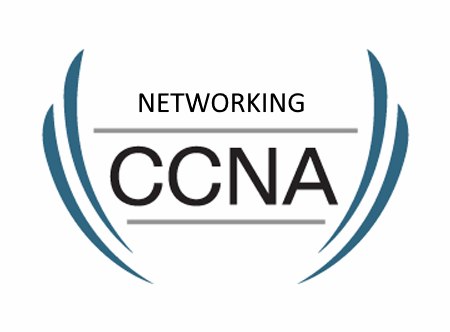CCNA - Advanced Concept of Networking

This course is designed for beginning wan administrators who are interested in learning essential wan administration skills. The class provides-hands-on training to effectively use, customize, router and switches. In addition, administrators will learn how to perform essential wan administration tasks including routing and switching, security implimentation on Routers, Switches and wireless.
Basics of Network, Understanding Cables, Understanding Protocols which we use over internet, OSI Model, Creating Network using Router and Switches, Routing, Switching, Security Implimentation on Router and Switch, Wi-fi, use of IP Addressing IPV4 & IPV6 (Classfull and Classless).
After completing this course, you will be able to configure and administrate Router's and Swithes.
Operation of IP Data Networks
- Recognize the purpose and functions of various network devices such as Routers, Switches, Bridges and Hubs.
- Select the components required to meet a given network specification.
- Identify common applications and their impact on the network
- Describe the purpose and basic operation of the protocols in the OSI and TCP/IP models.
- Predict the data flow between two hosts across a network.
- Identify the appropriate media, cables, ports, and connectors to connect network devices to other network devices and hosts in a LAN
LAN Switching Technologies
- Determine the technology and media access control method for Ethernet networks
- Identify basic switching concepts and the operation of switches:
- Collision Domains
- Broadcast Domains
- Types of switching
- CAM Table
- Configure and verify initial switch configuration including remote access management.
- IOS commands to perform basic switch setup
- Verify network status and switch operation using basic utilities such as ping, telnet and ssh.
- Describe how VLANs create logically separate networks and the need for routing between them.
- Explain network segmentation and basic traffic management concepts
- Configure and verify VLANs
- Configure and verify trunking on switches
- DTP
- Auto negotiation
IP addressing (IPv4 / IPv6)
- Describe the operation and necessity of using private and public IP addresses for IPv4 addressing
- Identify the appropriate IPv6 addressing scheme to satisfy addressing requirements in a LAN/WAN environment.
- Identify the appropriate IPv4 addressing scheme using VLSM and summarization to satisfy addressing requirements in a LAN/WAN environment.
- Describe the technological requirements for running IPv6 in conjunction with IPv4 such as dual stack
- Describe IPv6 addresses
- Global unicast
- Multicast
- Link local
- Unique local
- eui 64
- autoconfiguration
IP Routing Technologies
- Describe basic routing concepts
- CEF
- Packet forwarding
- Router lookup process
- Configure and verify utilizing the CLI to set basic Router configuration
- IOS commands to perform basic router setup
- Configure and verify operation status of an ethernet interface
- Verify router configuration and network connectivity
- IOS commands to review basic router information and network connectivity
- Configure and verify routing configuration for a static or default route given specific routing requirements
- Differentiate methods of routing and routing protocols
- Static vs. Dynamic
- Link state vs. Distance Vector
- next hop
- IP routing table
- Passive interfaces
- Configure and verify OSPF (single area)
- Benefit of single area
- Configure OSPF v2
- Configure OSPF v3
- Router ID
- Passive interface
- Configure and verify interVLAN routing (Router on a stick)
- sub interfaces
- upstream routing
- encapsulation
- Configure SVI interfaces
IP Services
- Configure and verify DHCP (IOS Router)
- configuring router interfaces to use DHCP
- DHCP options
- excluded addresses
- Lease time
- Describe the types, features, and applications of ACLs
- Standard
- Sequence numbers
- Editing
- Extended
- Named
- Numbered
- Log option
- Configure and verify ACLs in a network environment
- Named
- Numbered
- Log option
- Identify the basic operation of NAT
- Purpose
- Pool
- Static
- 1 to 1
- Overloading
- Source addressing
- One way NAT
- Configure and verify NAT for given network requirements
- Configure and verify NTP as a client
Network Device Security
- Configure and verify network device security features such as
- Device password security
- Enable secret vs enable
- Transport
- Disable
- Telnet SSHVTYs
- Physical security
- Service password
- Describe external authentication methods
- Configure and verify Switch Port Security features such as
- Sticky MAC
- MAC address limitation
- Static / dynamic
- Violation modes
- Err disable
- Shutdown
- Protect restrict
- Shutdown unused ports
- Err disable recovery
- Assign unused ports to an unused VLAN
- Setting native VLAN to other than VLAN 1
- Configure and verify ACLs to filter network traffic
- Configure and verify an ACLs to limit telnet and SSH access to the router
Troubleshooting
- Troubleshoot and correct common problems associated with IP addressing and host configurations.
- Troubleshoot and Resolve VLAN problems
- Identify that VLANs are configured
- Port membership correct
- IP address configured
- Troubleshoot and Resolve trunking problems on switches
- Correct trunk states
- Correct encapsulation configured
- Correct vlans allowed
- Troubleshoot and Resolve ACL issues
- Statistics
- Permitted networks
- Direction
- Interface
- Troubleshoot and Resolve Layer 1 problems
- Framing
- CRC
- Runts
- Giants
- Dropped packets
- Late collision
- Input / Output errors
LAN Switching Technologies
- Identify enhanced switching technologies
- RSTP
- PVSTP
- Etherchannels
- Configure and verify PVSTP operation
- describe root bridge election
- Spanning tree mode
IP Routing Technologies
- Describe the boot process of IOS routers
- POST
- Router bootup process
- Configure and verify operation status of a Serial interface
- Manage IOS Files
- Boot preferences
- IOS image(s)
- Licensing
- Show license
- Change license
- Differentiate methods of routing and routing protocols
- Administrative distance
- split horizon
- Metric
- Next hop
- Configure and verify OSPF (single area)
- Neighbor adjacencies
- OSPF states
- Discuss Multi area
- Configure OSPF v2
- Configure OSPF v3
- Router ID
- LSA types
- Configure and verify EIGRP (single AS)
- Feasible Distance / Feasible Successors /Administrative distance
- Feasibility condition
- Metric composition
- Router ID
- Auto summary
- Path selection
- Load balancing
- Equal
- Unequal
- Passive interface
IP Services
- Recognize High availability (FHRP)
- VRRP
- HSRP
- GLBP
Troubleshooting
- Identify and correct common network problems
- Utilize netflow data
- Troubleshoot and Resolve Spanning Tree operation issues
- Root switch
- Priority
- Mode is correct
- Port states
- Troubleshoot and Resolve routing issues
- Routing is enabled
- Routing table is correct
- Correct path selection
- Troubleshoot and Resolve OSPF problems
- Neighbor Adjacencies
- Hello and Dead timers
- OSPF area
- Interface MTU
- Network types
- Neighbor states
- OSPF topology database
- Troubleshoot and Resolve EIGRP problems
- Neighbor adjancies
- AS number
- Load balancing
- Split horizon
- Troubleshoot and Resolve interVLAN routing problems
- Connectivity
- Encapsulation
- Subnet
- Native VLAN
- Port mode trunk status
- Troubleshoot and Resolve WAN implementation issues
- Serial interfaces
- PPP
- Frame relay
- Monitor NetFlow statistics
- Troubleshoot etherchannel problems
WAN Technologies
- Identify different WAN Technologies
- Metro Ethernet
- VSAT
- Cellular 3G / 4G
- MPLS
- T1 / E1
- ISDN
- DSL
- Frame relay
- Cable
- VPN
- Configure and verify a basic WAN serial connection
- Configure and verify a PPP connection between routers
- Configure and verify Frame Relay on routers
- Implement and troubleshoot PPPoE
Two certifications will be provided to participants:
- Microsoft Certified Technology Associate Certification (MTA -Networking Fundamental) certified by Microsoft.
- Institution Certification certified by DOIS Education & Technologies Private Limited
Duration of Course: 40Hrs
Course Price : 12,500 INR + GST OR 220 USD
